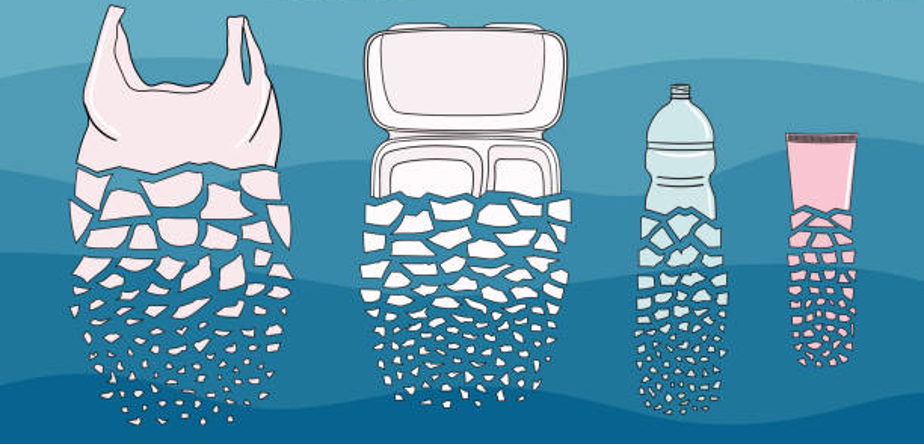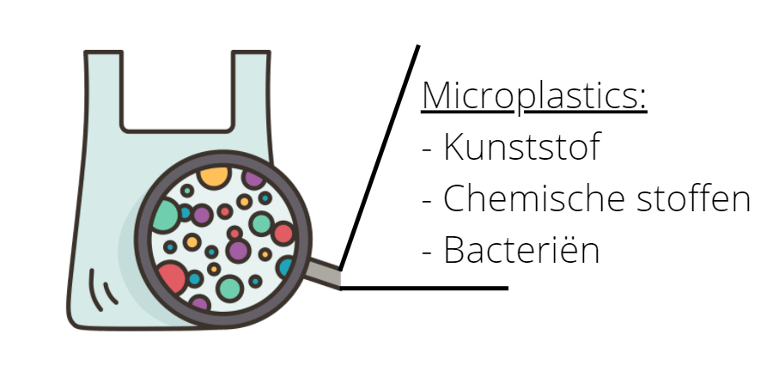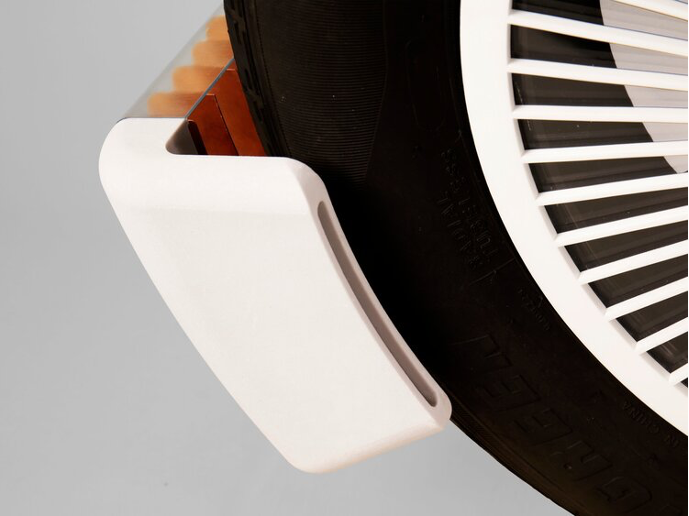The plastic trash clash
A soup of small plastics in our bodies
By Maaike Stok, 6 april 2022
At the end of March 2022, it was big news that microplastics had been found in human blood. This discovery by Dutch and Canadian researchers is the first proof that the small plastics can end up in our bloodstream. In this way, the plastics could end up in all our organs. Further research will have to show whether this actually happens and to what extent it is harmful. What do we actually know about microplastics? What influence do they have on our health? And what can we do about them?
Plastic is all around us: in the air we breathe, in the food we eat and in the water we drink. This is because the plastic products we use release small particles: microplastics. Take car tyres, for example: due to friction between the road surface and the rolling tyre, small rubber particles are released. They spread through the air and enter our bodies through inhalation. The use of plastic cups and bottles also releases microplastics, which we then drink.

Plastic objects crumble slowly, creating microplastics. These can spread into our environment and eventually end up in our bodies. The same thing happens to the plastic in the ocean, after which the particles can easily spread through all the water.

Microplastics consist of various components, to which we are exposed when they enter our bodies.
The effect on our health of ingesting microplastics is difficult to determine. According to Raymond Pieters, immunotoxicologist at Utrecht University, this has to do with the composition of the particles. Because of the large variation in this, the health effect differs per type of particle. Pieters: ‘We are dealing with very complex substances, the effects of which we do not know. Microplastics consist of plastic molecules to which all kinds of chemical substances are added. If the particles subsequently end up in the environment, bacteria, or pieces thereof, will also attach to them. So you are not only exposed to plastic, but to a whole collection of substances.
“Microplastics are very complex substances; they expose you to a whole collection of substances.”
An example of an added chemical that has been frequently mentioned in the media is bisphenol A (BPA). Research has shown that a high concentration of this substance interferes with the functioning of the immune system, among other things. This was followed by the European Commission’s urgent advice to manufacturers to limit the amount of BPA in plastic products. This has led to the development of ‘BPA-free’ products. It is doubtful whether this is a good solution, according to Pieters: “Instead of BPA, BPS is now used, for example, but we know less about this. Further research is therefore needed to determine the harmfulness of these alternatives.
But what is known about the effects of microplastics? The lungs and intestines are the organs that, through breathing and digestion, come into frequent contact with the plastic particles. A large proportion of the microplastics that enter the body in this way find their way out again, for example via the faeces. The particles that remain in the body can cause minor inflammations if they are present in high concentrations. In order to better understand such effects, Raymond Pieters’ research group is joining forces with other European researchers. In various projects, they will investigate how microplastics and the even smaller nanoplastics behave in the body.

Close-up of the design by The Tyre Collective. The white device captures rubber particles by using the charge of the particles and air currents around the tyre. ©The Tyre Collective
Since we do not yet know for sure to what extent microplastics affect our health, many experts believe it is important to take precautionary measures now. Prevention is better than cure! One way to do this is to catch microplastics at the source. For example, there are various filters for washing machine water. These prevent microfibres from clothing being discharged with the water. Another product that does not yet exist is the design by The Tyre Collective. This device directly captures rubber particles that come loose from car tyres, which greatly reduces the amount of microplastics in the air.
To limit the plastic soup in our own bodies, we can also take matters into our own hands. For example, by becoming aware of our use of plastic and reducing it. Pieters gives an example: “I sometimes see people at the coffee machine putting a lid on their cup. They use it for one or two minutes and then throw it away. Are you aware of the fact that you are using a product that has cost something and then ends up on the rubbish heap? Why are you using it?”
Sources
Websites:
https://echa.europa.eu/nl/hot-topics/bisphenol-a
https://www.rivm.nl/bisfenol-a-bpa
https://www.thetyrecollective.com/
Articles:
Hwang, J., Choi, D., Han, S., Jung, S. Y., Choi, J., & Hong, J. (2020). Potential toxicity of polystyrene microplastic particles. Scientific reports, 10(1), 1-12.
Leslie, H. A., van Velzen, M. J., Brandsma, S. H., Vethaak, D., Garcia-Vallejo, J. J., & Lamoree, M. H. (2022). Discovery and quantification of plastic particle pollution in human blood. Environment International, 107199.
Vethaak, A. D., & Legler, J. (2021). Microplastics and human health. Science, 371(6530), 672-674.

